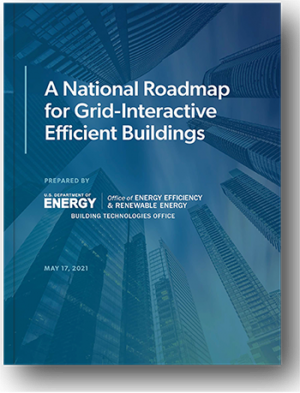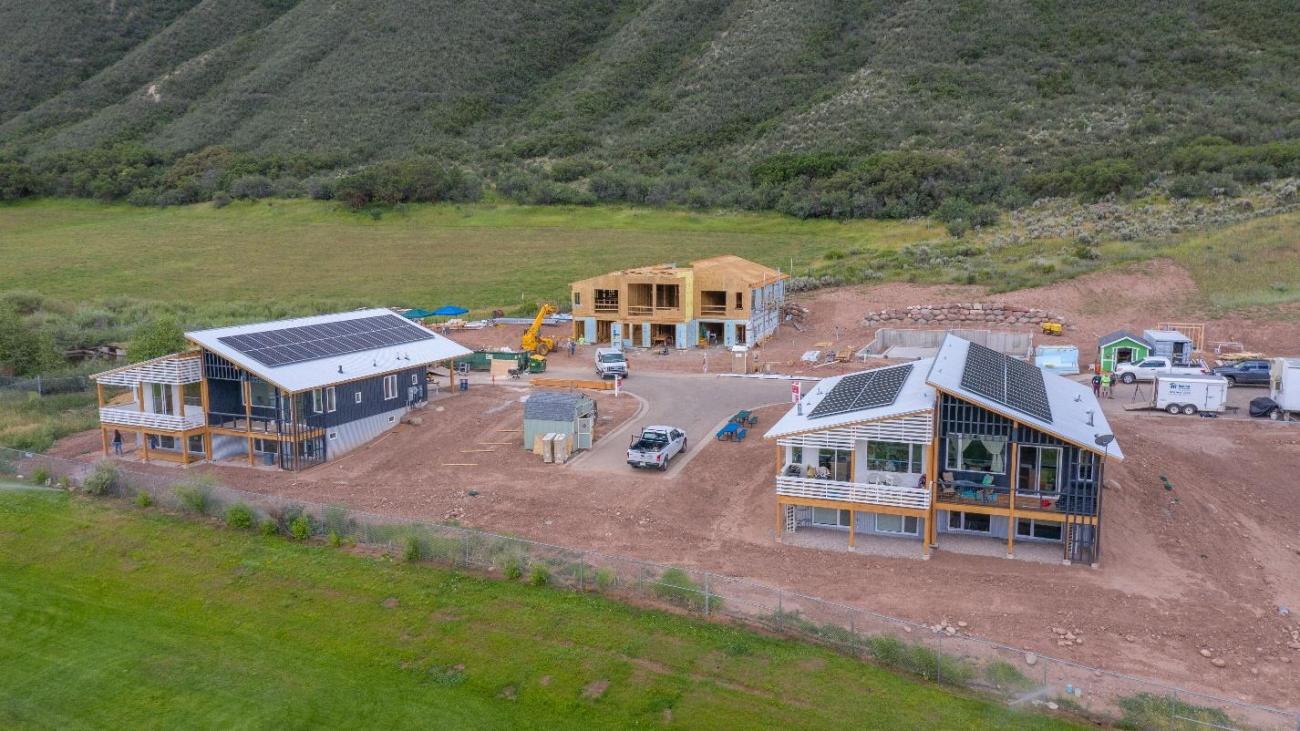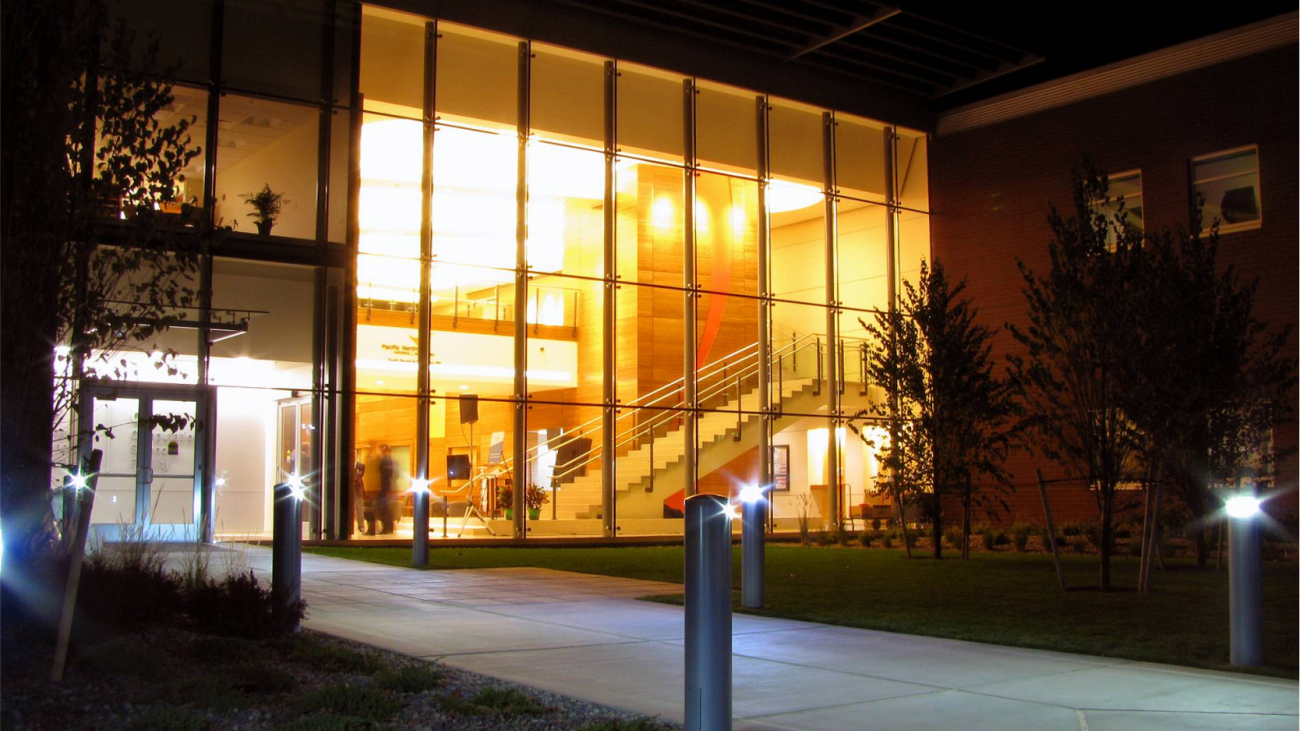Resources
Main navigation
General Information
Grid-Interactive Efficient Buildings (GEBs)
What is a Grid - Interactive Efficient Building?
A grid-interactive efficient building (GEB) is an energy-efficient building that uses smart end-use equipment and/or other onsite DERs to provide demand flexibility while co-optimizing for energy cost, grid services, and occupant needs and preferences, in a continuous and integrated way.
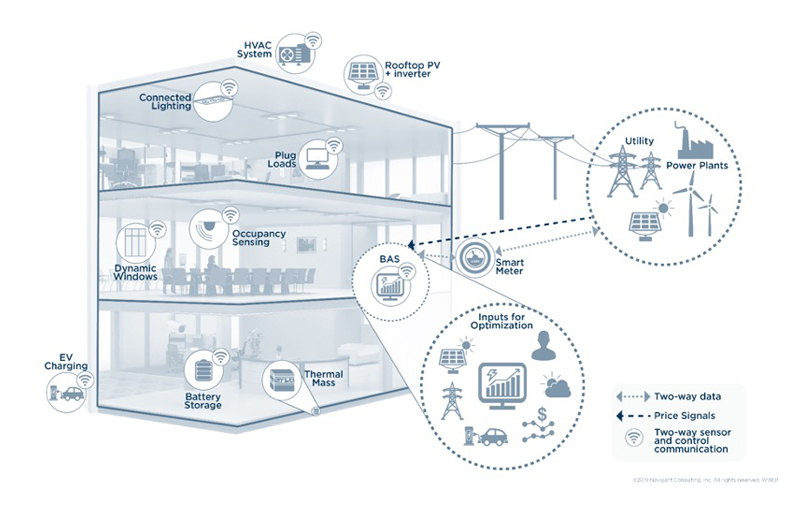
State-of-the-art sensors and controls can be used to curtail or temporarily manage up to 30% of the commercial building peak load savings.
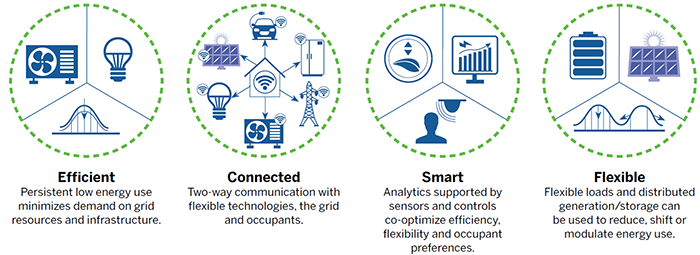
- Buildings account for >70% of U.S. electricity consumption and power sector CO2 emissions.
- Achievable national adoption of GEBs could save hundreds of billions of dollars in power system costs, reduce carbon emissions, and relieve stress on the grid.
- Integrating state-of-the-art technologies, sensors, and controls throughout the commercial building stock could save up to 29% of site energy consumption.
- DOE has a goal of tripling energy efficiency and demand flexibility in residential and commercial buildings by 2030, relative to 2020 levels
DOE's Building Technologies Office research is helping to make buildings become smarter about the amount and timing of energy use through the Grid-Interactive Efficient Buildings (GEB) initiative.
GEBs help save money on energy bills, and they also benefit the electric grid by enhancing grid reliability and resilience, deferring capital expenditures, and helping to balance the renewable generation supply.
